English
Human rights
The Hunt

Photo by KAROL GRYGORUK, RATS AGENCY, 30 November 2021.
Sameh (25) and Ali (40) are trying to hide in the depths of the forest. They must be invisible, which is why we do not caption the photo. In recent weeks, the Polish Border Guard has repeatedly transported them to the border and pushed them to Belarus. They are paralyzed by every rustle. When the engines of military cars are heard in the distance, they freeze in complete silence. The hunt is on.
They had fled the civil war in Yemen. Like hundreds of others, they are trying to enter the European Union in search of security and stability. They do not find it in Poland. For months, there has been a continuing humanitarian crisis on the Polish-Belarusian border.
At the end of October, the so-called pushback law came into force. With it, Poland has legalized expelling people who cross the border in an unregulated way – the only possible way for them, because safe migration routes do not exist. Thus, the Polish government violates the provisions of the Geneva Convention Relating to the Status of Refugees. Everyone is turned back, regardless of age, gender, and health condition. Men, women, and children are being pushed back into a dictatorship where human rights remain a fiction. For months, activists have been alarming about the systemic violence that is occurring on both sides of the border.
“Now you are our soldiers!” Abdullah (31) heard from a Belarusian border guard. A moment later, he was once again pushed beyond the razor wire.
Text: Anna Alboth
13 – the number of dead in the humanitarian crisis at the Polish-Belarusian border (as of November 13, 2021, source: Grupa Granica)
Smugglers

Photo by KAROL GRYGORUK, RATS AGENCY, 2 November 2021.
Ceuta and Melilla are the last enclaves of Spanish colonialism in North Africa. Protected by three six-meter fences and a security system, theirs are the most heavily guarded borders of the European Union. Despite this, every day hundreds of portadoras, or Moroccan women smugglers, move goods through the Barrio Chino border crossing, from the Spanish side to the Moroccan side. Without customs, paperwork, and in broad daylight.
They carry on their backs from thirty to a hundred kilograms, sometimes with the aid of skateboards. They smuggle used clothes, shoes, blankets, toilet paper, or even plastic bags, which were banned in Morocco five years ago. They can earn 5 euros for each pass, so they queue at night to start as early as possible and make a few rounds in a day.
For widows or divorcees, this “unusual form of trade”, as the locals call smuggling, is the only source of income. Those who are unable to do smuggling work try to get to Spain by crossing the border illegally. EU policy reveals its paradoxes here: Spain, like the EU as a whole, theoretically supports Morocco in its migration challenges. However, the Moroccan Human Rights Association (Association Marocaine Des Droit Humains, AMDH) notes that the Union does not monitor the way Morocco spends money on its side of the border.
Text: Anna Alboth
3.5 billion – the amount of financial support (in euros) that Morocco is to receive from the EU for the period 2020–2027 in exchange for preventing refugees from reaching Europe.
Usnarz Górny
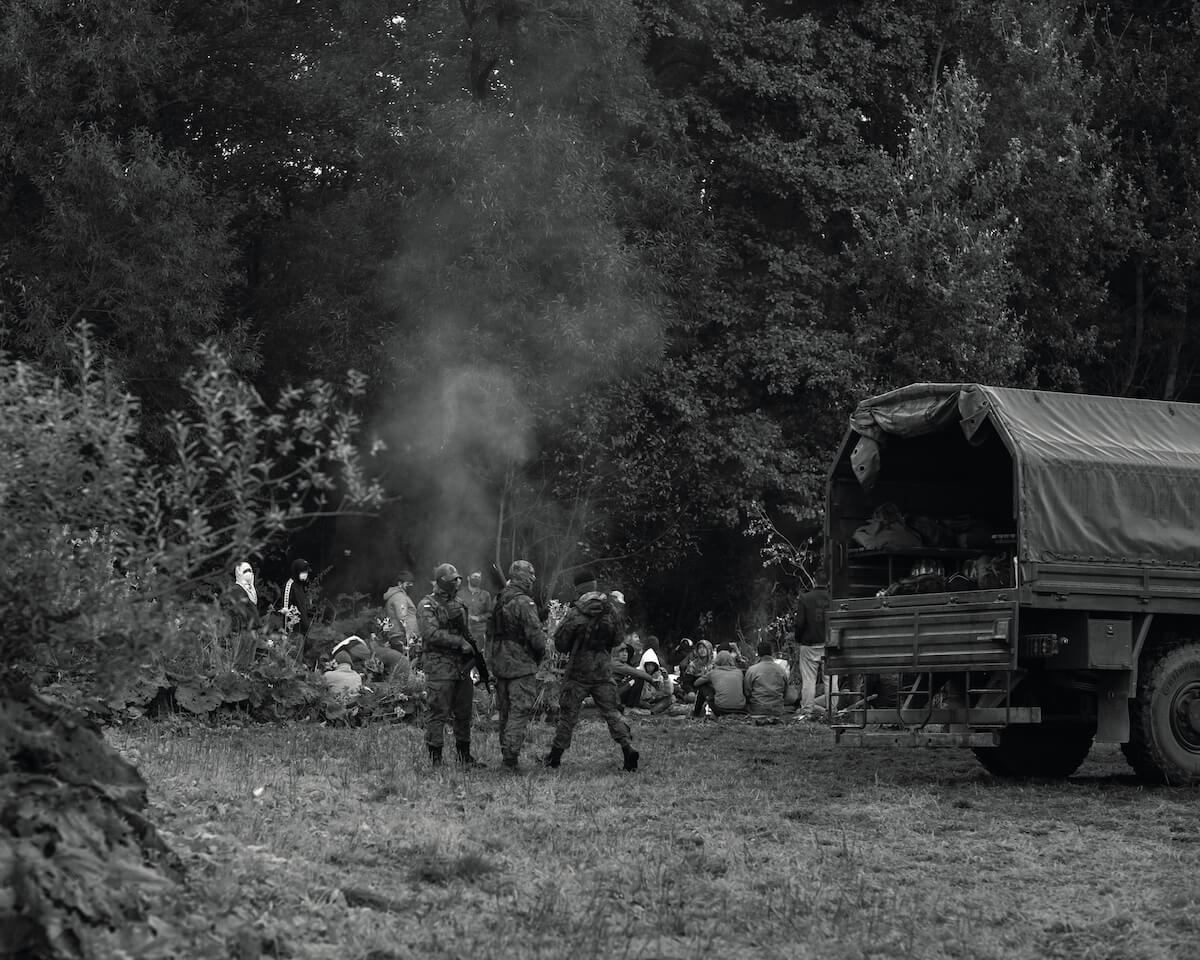
Photo by KAROL GRYGORUK, RATS AGENCY, 5 October 2021
It is Wednesday, August 18th, five o’clock in the morning. In Usnarz Górny, a tiny village located a few hundred meters from the Polish-Belarusian border, a group of thirty-two refugees from Afghanistan have been camping in the border zone for 24 hours. Among them are Mohammad, a tailor from Kabul, Sayed, a cook, Abdul, an electrical engineer, and Mohsen, a blacksmith. There is also Mariam with her beautiful grey cat Fiyuz. At dawn, it is cold, humid. They have not eaten in days. The stream from which they draw water will turn into muddy sludge in a few days. Trapped at the border, deprived of food and a doctor, surrounded on all sides by guards with deadly weapons, they were denied the right to apply for asylum in Poland.
According to the 2011 census, the small village nearby has the population of seventy-five. Now, transmission vehicles from Polish and European media have descended upon it. The activists speak directly about the “Big Brother syndrome” – the object of voyeurism this time being a group of refugees from Afghanistan and a cat. On September 2, the Polish government introduced a state of emergency in the borderland, completely stifling the work of both the media and social organizations.
Usnarz has become a symbol of the so-called pushback procedure, prohibited by international law – pushing people beyond the borders of the Union to prevent them from applying for asylum. Those who manage to get through, wander through the dense forests. The elderly, the sick, the children are literally struggling to survive.
It is September 14th. In Usnarz, in the border zone, Abdul, Mohammad, Sayed, Mohsen, Mariam are still trapped.
Text: Anna Dąbrowska, Homo Faber, Grupa Granica.
2 degrees Celsius – the temperature recorded in Usnarz Górny in the morning, September 4th.
Donbass
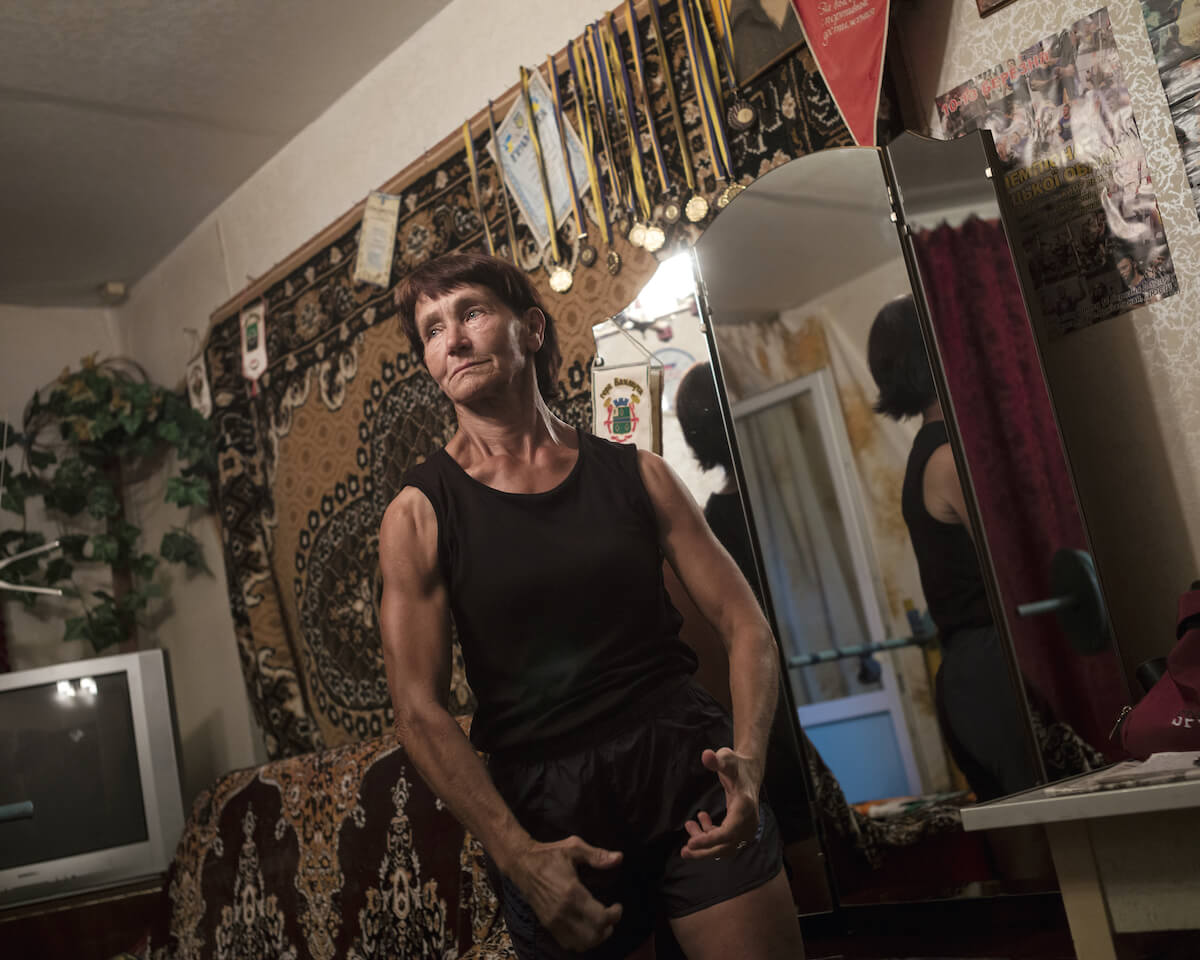
Photo by KAROL GRYGORUK, RATS AGENCY, 21 August 2021
In the early morning of January 21, 2015 Svetlana Kravchenko (64) was finishing her training set in her apartment when the first missiles fell on the Ukrainian city of Svitlodarsk in the Donbass. She put down the barbell and calmly walked out into the street, where her confused neighbours were running in panic. Shrapnel from GRAD rockets and mortar shells was flying everywhere. After three days, she returned to her destroyed apartment, where not a single object survived.
For months, Svetlana helped the inhabitants of the city which she had been building for decades as a forewoman. She knew exactly where to find a safe place during the fighting. At the time of the most intense bombings, she carried elderly and disabled people on her back to a nearby basement shelter. She delivered medicine and food to the most needy. And she did not give up training for a moment. Today, she is a 12-time Ukrainian senior weightlifting champion.
7 – the number of years the forgotten conflict in the east of Ukraine has continued. Since thousands of young people left for Kiev and other big cities fleeing the war, frontal towns are mainly populated by the elderly.
This report was created in cooperation with the Polish Humanitarian Action.
Scars
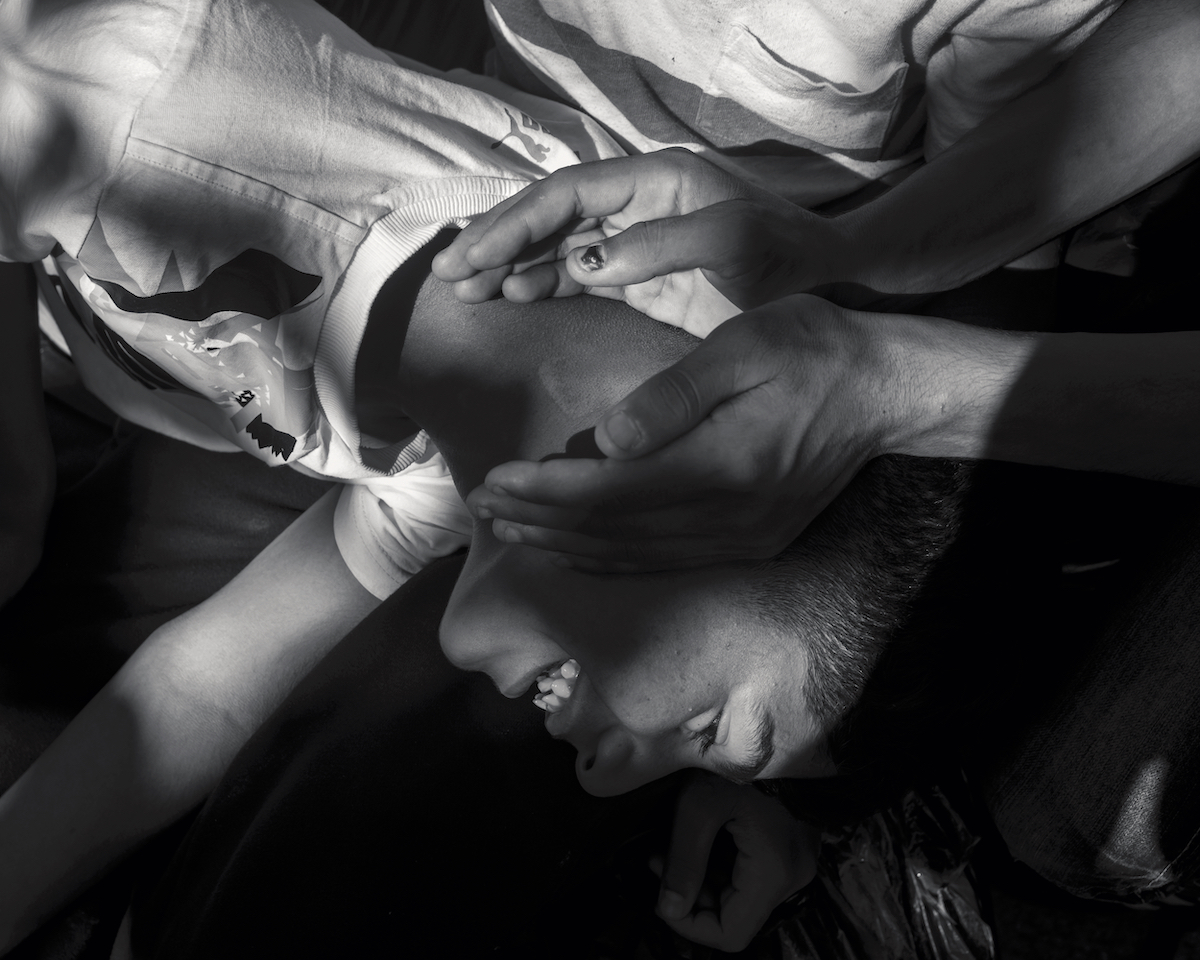
Photo by KAROL GRYGORUK, RATS AGENCY, 3 August 2021
Muhammad Reza (10 years old, pictured), Muhammad Erfan (10 years old) and Arash (12 years old) are from Afghanistan. The scar on the boy in the picture’s neck is a souvenir from the Moria refugee camp on the island of Lesbos. During a riot, which are a regular occurrence there, someone stabbed him in the neck with a knife. Now, Reza sleeps on the streets of Athens, in Viktoria Square, along with dozens of other refugees who have nowhere to go. He sleeps on a blanket, out in the open.
For refugees, after months in camps and prisons, homelessness is another step on the endless road to normality. COVID-19 has only made this road more difficult. ID applications, meetings with lawyers, support from non-governmental organizations, access to health or psychological care – these are just a few examples of the aid that has been frozen or significantly reduced in the times of the coronavirus.
The pandemic has put refugees in a difficult situation: their needs have increased, and at the same time their movement has been further restricted. A new report from the Minority Rights Group reveals how some governments have used the situation to introduce even more strict migration policies.
Text: Anna Alboth
40% – the cut in funding to humanitarian aid for refugees in Europe, compared to last year.
Non omnis

Photo by GRZEGORZ WEŁNICKI, RATS AGENCY, 6 July 2021
Remains is what we call a dead human body, but no law defines what it actually is. In the light of Polish law, human remains are a thing, but in some aspects their “thingness” is limited by the provisions of the Civil Code.
In many cultures, respect shown to human remains is considered a testament to the enlightenment of a given community. The ways in which the remains are treated are, as research shows, very different: from a special care, or even reverence, to neutrality.
In the face of dynamically developing new medical technologies in relation to human remains, many new ethical and legal questions arise. How should we regulate the legal status of the human body after death? If a corpse is a thing, can it be property? If so, who does it belong to? How to regulate the issues of autopsy or organ transplantation?
Photo taken in one of the crematoria in Poland in 2019. It shows the remnants of acetabular shells, screws, plates, and other prosthetic elements after cremation. These parts are purchased by companies for melting and reuse in medicine.
Text: Ewa Mielczarek
Up to 2 years imprisonment – liability set in the Polish Penal Code for desecrating a corpse, human ashes, or the resting place of the deceased
Right to work
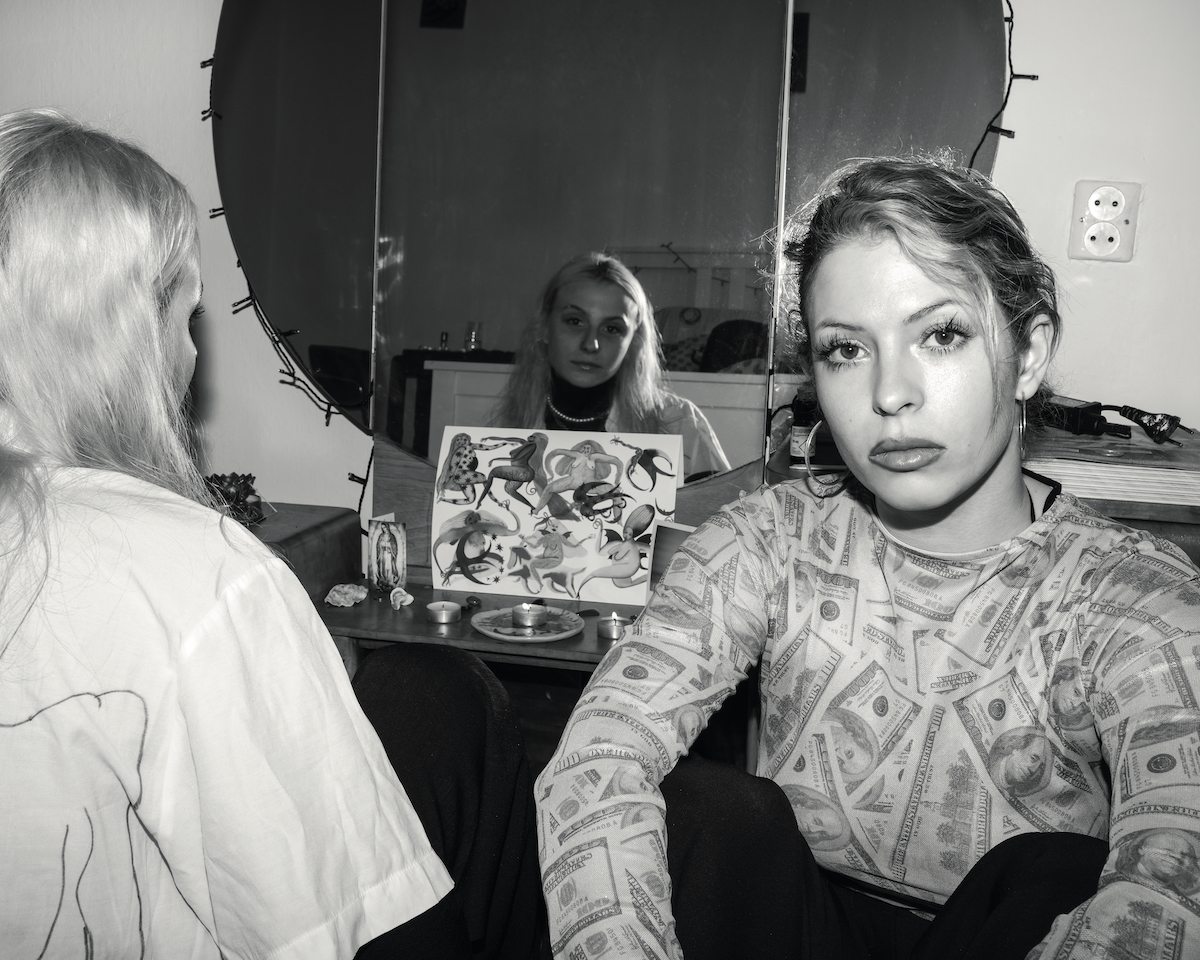
Photo by FILIP SKROŃC, RATS AGENCY, 2 June 2021
Sex work is work. It requires a number of competences and a considerable experience, because it deals with emotions and with intimacy. As sex workers, we are conscious about our lives, our choices, and our rights.
Meanwhile, we live in a criminalized environment, which, as Amnesty International notes, “further endangers and marginalizes [us] and impedes [our] ability to seek protection from violence and legal and social services.” That is why we are in favour of the complete decriminalization of sex work.
While the law protects morality, it leaves us on our own, regarding us as victims without subjectivity or agency. We have no political representation, even though our demands are primarily those that apply to all workers. We are exposed to social ostracism and to systemic violence, including from the police.
At the same time, the media invent ever more controversial headlines, pathologizing and fetishizing our experiences, which are at the same time dismissed and undermined, and our voices silenced and erased. This gave us the idea for dwie dupy o dupie, a podcast on which we share stories from the industry, but also educate – on our own terms, without lecturing or deferring to anyone.
Text: Ola Kluczyk and Julia Tramp (also pictured)
29 400 – the number of views of the podcast’s first three episodes
Heritage
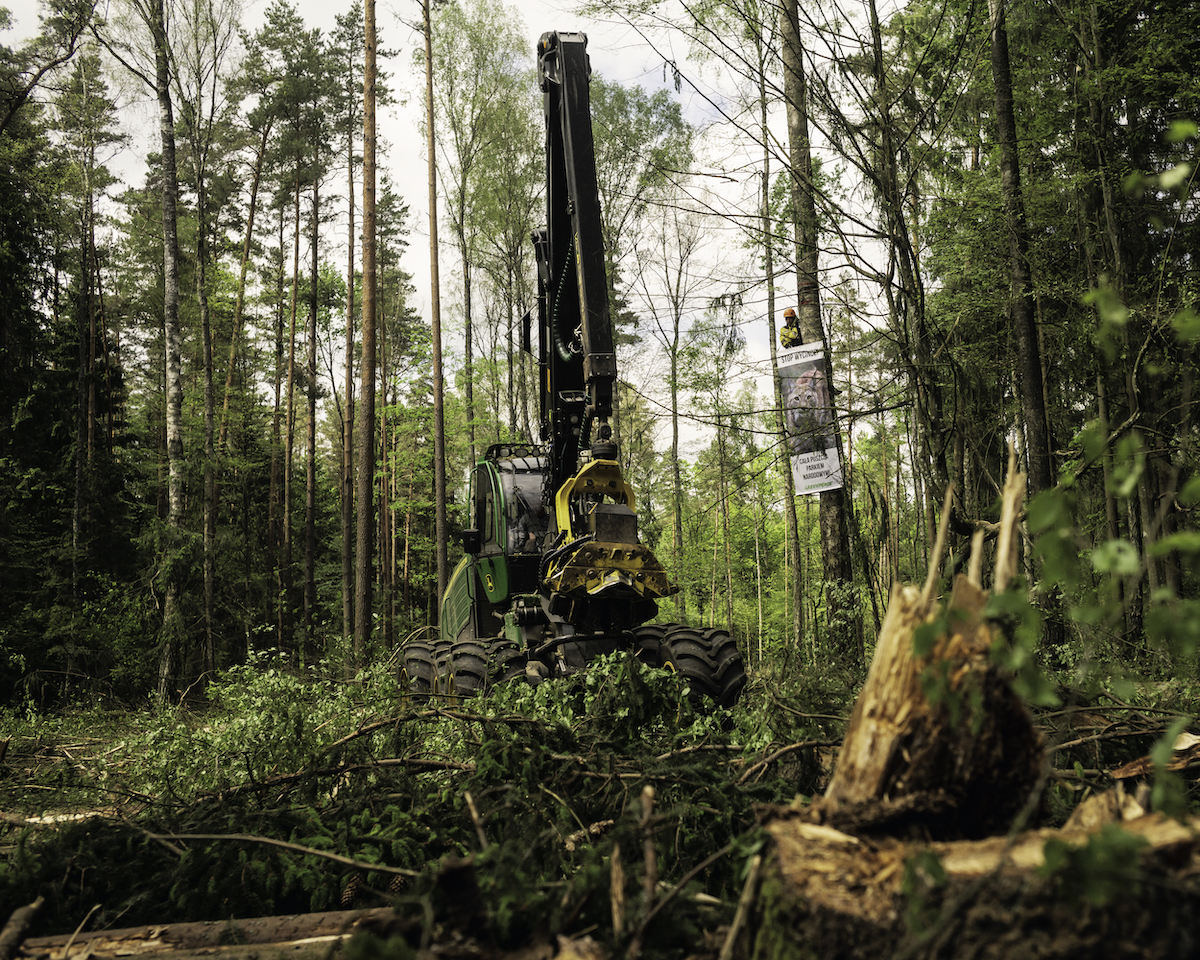
Photo by KAROL GRYGORUK, RATS AGENCY, 4 May 2021
The Białowieża Forest is the last primeval lowland forest in Europe and a sanctuary for many unique species of plants and animals. For more than a decade, NGOs have been struggling to preserve its biodiversity.
In 1972, UNESCO adopted the Convention Concerning the Protection of the World Cultural and Natural Heritage, under which the signatory states undertake to ensure the protection of objects and sites recognized as part of this heritage.
Poland was among the first countries to sign the Convention.
In April 2018, the European Court of Justice ruled that the Polish authorities had violated European environmental law by allowing intense logging even in the oldest parts of the Białowieża Forest.
On March 9, 2021, the Polish Deputy Minister of the Environment signed a decision to resume logging. After three years of relative peace, stands over a century old are once again threatened with felling.
In the photo: Blockade of illegal logging in the Białowieża Forest, June 2017.
500 million zlotys – the earnings of State Forests in 2020
Water

Photo by MARTA SOSZYŃSKA, RATS AGENCY, 6 April 2021
In 2017, a cholera outbreak swept the provinces of South Kivu and North Kivu, in the east of the Democratic Republic of the Congo (DRC).
It is a disease that rapidly attacks the digestive tract. One can contract it by ingesting bacteria-contaminated water or food. Long eliminated from highly developed countries, today it occurs mainly in places where there is no reliable access to drinking water. There are still many such places in the world.
The average American consumes about 340 litres of water per day. In the Kivu region, on the other hand, the average family draws water from nearby wells (mostly built from development aid) or simply from a lake or river. Three- or five-litre jugs must be enough for laundry, cooking, and washing for the whole family. Children and women are primarily responsible for carrying the water home.
Before 2017, there were many water treatment plants in the region. A lot of them were financed by US development aid (USAID). After Donald Trump came to power, aid budgets were drastically reduced overnight and many people in the region lost access to safe wells. Just a few months after the US election, the cholera epidemic broke out in the region.
In the photo: Residents of the suburbs of Bukavu, the capital of South Kivu, draw water from the only safe well in the area (April 2017, Bukavu, DRC)
90 litres – daily personal water consumption per capita in Poland.
Superstition
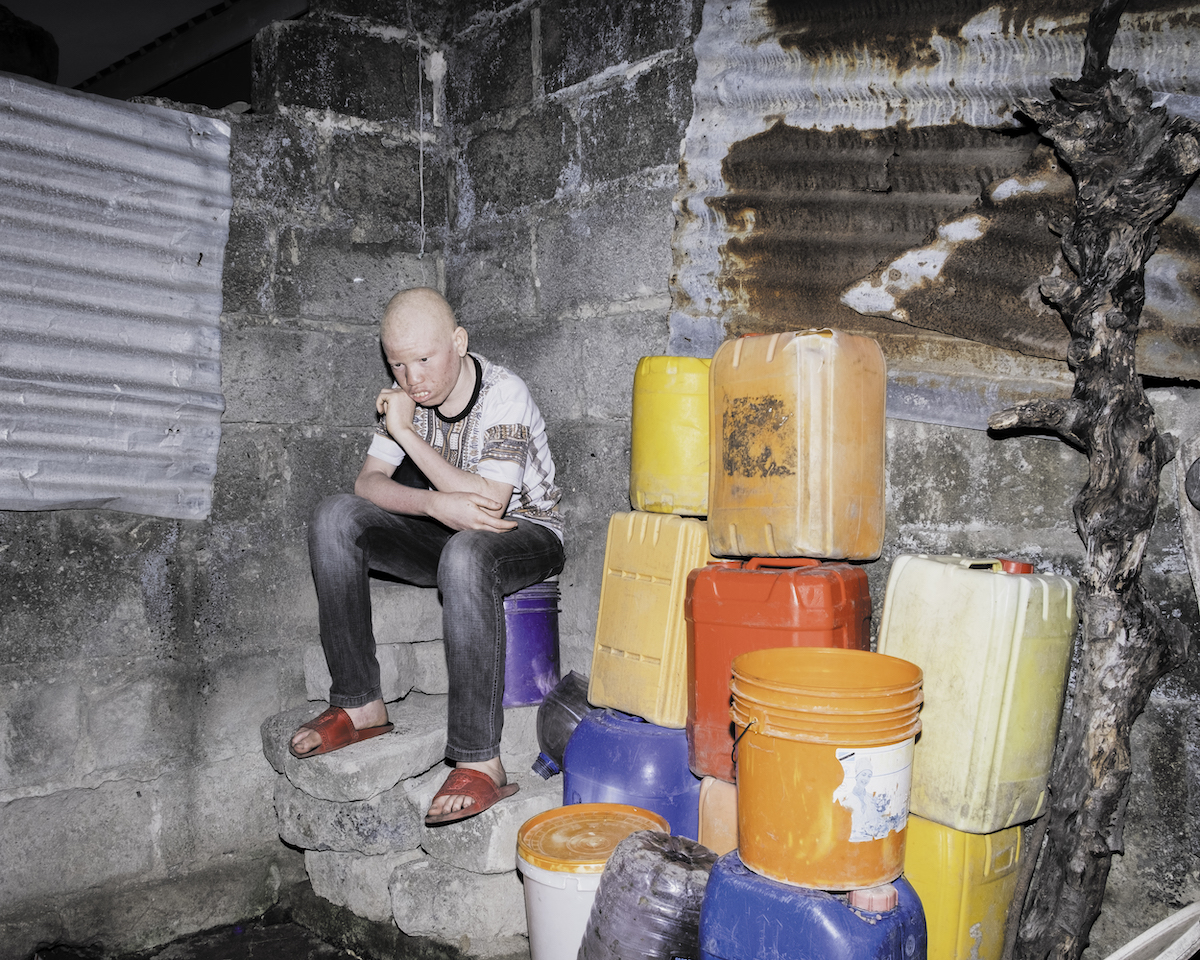
Photo by FILIP SKROŃC, RATS AGENCY, 3 March 2021
In early February 2021 in Malawi, in the Machinga district, someone attempted to kidnap a 12-year-old girl. About the same time, the body of a murdered man named Saidi Dyton was found. These are the most recent victims of the persecution that people with albinism suffer. For five years, Ikponwosa Ero, an independent UN expert, has been alarming that the group is in danger of total eradication in Malawi.
The first murder of this wave took place nearly fifteen years ago in Tanzania. A woman was murdered and dismembered. In the village of Nyahunge, a rumour spread that it was at the behest of witches, because no one had yet linked the case to stories about the “magical power of albino bodies”. Such superstitions were beginning to gain momentum at the time, and tales of legs, arms, hair, and genitals that could turn a pauper into a rich man quickly crossed the lines drawn on maps. Traders from the Democratic Republic of the Congo, Kenya, Uganda, Burundi, Mozambique, or Malawi soon began to make a killing.
In the photo: Salum Abdallah at the back of his family home in the suburbs of Dar es Salaam.
618 – the number of reported attacks on people with albinism in the entire African continent.
Training

Photo by KAROL GRYGORUK, RATS AGENCY, 2 February 2021
Mola recounts how the police advanced on a solidarity picket in front of the police station on December 9, at 22:00 sharp. She says she did not resist arrest. Despite this, one of the policemen grabbed her bandana, strangling her, and another jerked her arm, twisting it and, as a result, breaking it in several places. Diagnosis: spiral fracture with an intermediate fragment of the left humeral shaft, eligible for surgical treatment.
Her phone was taken from her in the police car and she was refused help. Through the car window, she could see the medics securing the protest. During the arrest, over a period of 45 minutes, several officers passed through the police car. One of the policewomen, who declared that she was a paramedic, allegedly grabbed Mola by the wrist and this way assessed that she was okay.
Sylwester Marczak, a spokesman for the Capital Police Headquarters, presented a different course of events for the media, but did not refer to the alleged behaviour of officers towards the injured woman.
The basis for detaining Mola was disturbing the night-time quiet hours. The concept is customary, not present in Polish law.
64 – the number of days, reduced from 144 during the epidemic, required for police officers’ training.
Text: Paweł Starzec
Sentenced
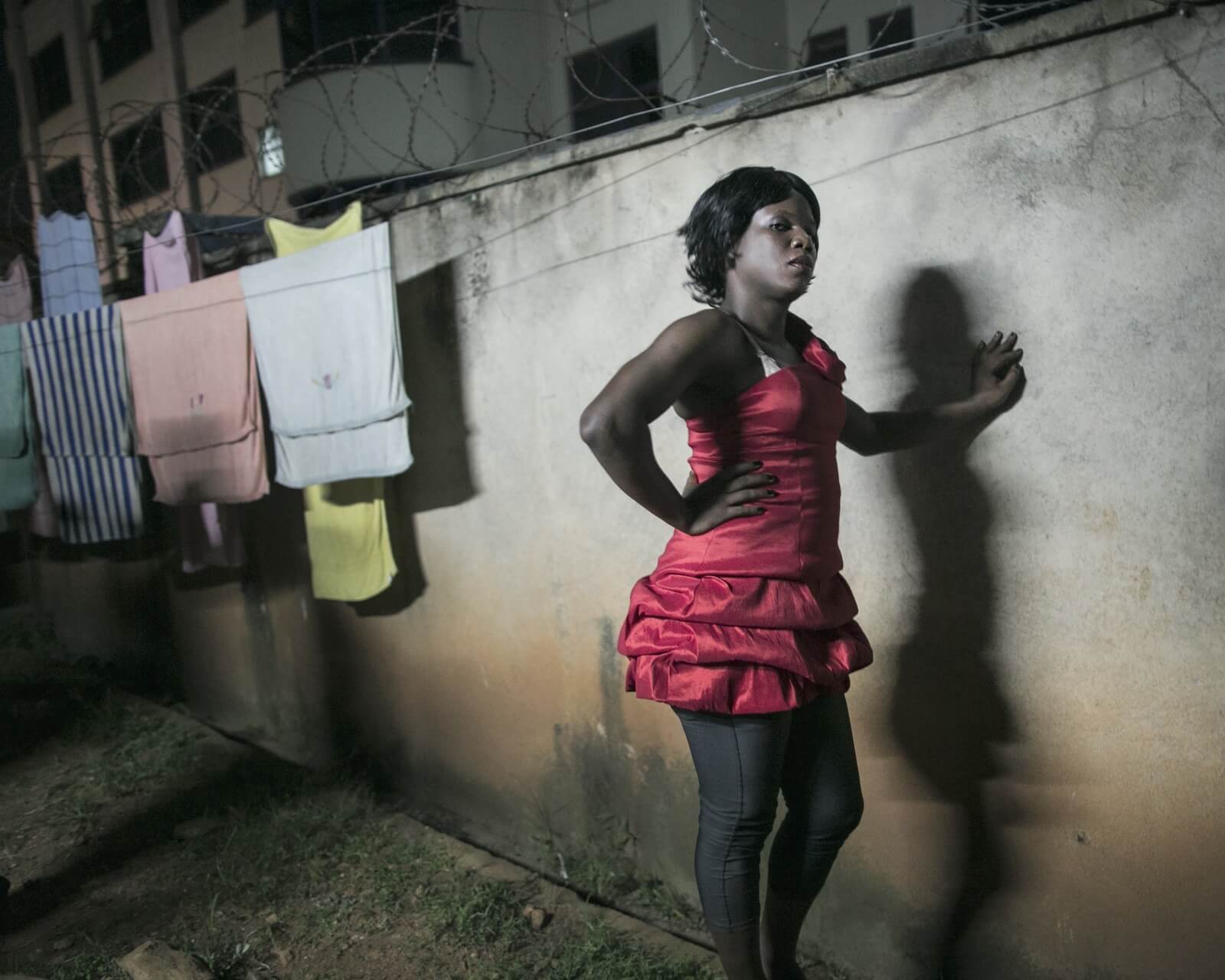
Photo by AGATA GRZYBOWSKA, RATS AGENCY, 5 January 2021
In 2013, the Ugandan government attempted to pass a series of resolutions targeting the LGBTQ community. They were not introduced due to a legal technicality and thanks to the protests of human rights organisations. Nevertheless, at the end of 2019, Ugandan lawmakers again began talking about increasing penalties.
The persecution of the Ugandan LGBTQ community intensified with the onset of the pandemic. The emergency measures adopted in the attempt to contain the spread of the coronavirus became the basis for a new series of arrests.
In March 2020, Ugandan police raided a shelter for homeless lesbian, gay, bisexual, and transgender people. Nineteen people were arrested and held in jail for fifty days, where they were subjected to psychological and physical torture.
54% of Ugandans still believe that same-sex couples should be prosecuted as criminals.
Text: Filip Skrońc
